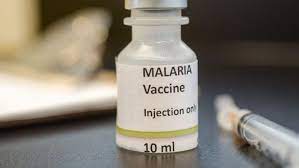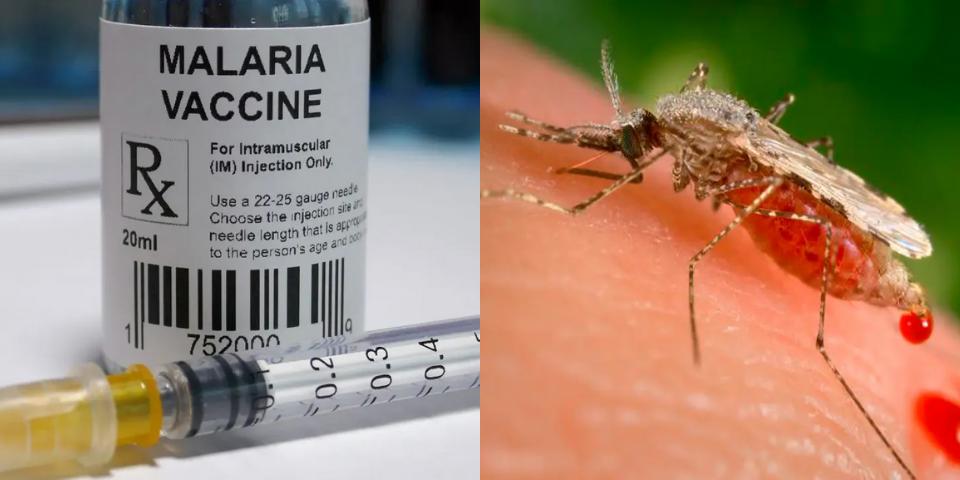
WHO approval New Malaria Vaccine

This topic is related to Current Affairs of IAS/PCS Prelims Exam and Mains Exam General Studies Question Paper-3 Science and Technology.
October 04, 2023
Why in news:
- Recently, the World Health Organization (WHO) has approved the second malaria vaccine.
key points:
- WHO has already approved this vaccine for use in three African countries Ghana, Nigeria and Burkina Faso.
- The name of this second vaccine is “R21/Matrix-M”.
- It has become the second vaccine in the world recommended by WHO for the prevention of malaria in children.
- It is noteworthy that WHO had approved the first malaria vaccine RTS,S/AS01 in 2021.
- This vaccine has been developed by Oxford University and manufactured by Serum Institute of India.
- The supporting technology of Novavax company has been used in the development of this vaccine.
- Notably, the Matrix-M ingredient is a proprietary saponin-based adjuvant from Novavax, which is licensed to Serum Institute for use in endemic countries.
- According to Serum Institute Pune, this vaccine will be available in the market from 2024.
- The price of one dose of this vaccine will be between ₹166 to ₹332.
- An agreement has been signed with the world's largest vaccine manufacturer- Serum Institute of India to produce 10 crore doses every year.
- If a person has malaria then he will have to take 4 doses of this vaccine.
- According to WHO Director General Dr. Tedros Adhanom Ghebreyesus, there is not much difference between RTS,S/AS01 and R21. Both of these are effective.
- This vaccine eliminates the effect of Plasmodium falciparum. Plasmodium falciparum is one of the five parasites that cause malaria and is the most dangerous.
- According to WHO, the vaccine can prevent 4 out of every 10 cases of malaria and 3 out of 10 people can be saved in severe cases.
Malaria related cases:
- According to WHO, there were 4.09 lakh deaths due to malaria worldwide in 2019, of which 67% i.e. 2.74% were children under 5 years of age.
- There were 3 lakh 38 thousand 494 cases of malaria in India in 2019 and 77 people died. The highest number of 384 deaths occurred in 2015.
- According to WHO, 95% of malaria patients are in Africa only.
About Malaria:
- Malaria is a mosquito borne blood disease.
- Malaria is spread through the bite of an infected female mosquito called Anopheles. A special type of bacteria is found in this mosquito, which in medical language is called Plasmodium Parasites.
- After entering the human body, these parasites undergo quantitative growth within the liver cells. These parasites destroy red blood cells (RBCs), resulting in loss of RBCs.
- This parasite is mainly found in tropical and subtropical regions of Africa, South America and Asia.
- Both prevention and treatment of this disease are possible.
Types of Malaria:
Plasmodium falciparum (P. falciparum)
- In this the patient becomes unconscious. He starts feeling cold along with headache and starts vomiting continuously. There is also a possibility of fever.
Plasmodium malariae (P. malariae)
- This malaria is not more dangerous than Plasmodium falciparum. In this, the patient starts having fever every fourth day and protein starts coming out from his urine. Due to this malaria there is protein deficiency in the body.
Plasmodium vivax (P. vivax)
- This type is found in most of the patients of malaria. In this, the patient has to face problems like back pain, hand pain, leg pain, high fever, loss of appetite etc.
Plasmodium ovale (P. ovale)
- Due to this, Tercian malaria occurs in the body.
Plasmodium knowlesi (P. knowlesi)
- The person suffering from this starts having fever along with chills. In this one has to face problems like headache, loss of appetite.
Malaria symptoms
- Persistent fever.
- Feeling cramps in hands and legs.
- Fever with headache.
- Fever with chills.
- Eyes becoming red.
- Blood in stool.
Malaria Control Efforts:
Globally:
- The World Health Organization (WHO) has identified 25 countries with the potential to eliminate malaria by 2025 under its 'e-2025 Initiative'.
- The WHO Global Technical Strategy for Malaria 2016-2030 aims to reduce malaria cases and mortality by at least 40% by 2020.
- To be reduced by at least 75% by 2025 and by at least 90% by 2030 compared to the 2015 baseline.
India:
- Efforts to eradicate malaria in India were started in the year 2015
- In 2016, the Ministry of Health and Family Welfare launched the National Framework for Malaria Elimination (NFME) to prevent malaria.
- NFME is currently implemented across the country under WHO's Global Technical Strategy 2016–2030 (GTS).
- The National Strategic Plan (2017-22) for malaria eradication was launched in July 2017.
- The scheme provides year-wise elimination targets in different parts of the country depending on the endemicity of malaria.
- ‘High Burden to High Impact’ (HBHI) initiative was launched in July 2019 in four states of the country (West Bengal, Jharkhand, Chhattisgarh and Madhya Pradesh) to eradicate malaria.
- Indian Council of Medical Research (ICMR) has established Malaria Elimination Research Alliance-India (MERA-India).
- Malaria Elimination Research Alliance-India (MERA-India) is a group of partners working on malaria control.
About WHO:
- The United Nations as a body for the health sector, this is an inter-governmental organization.
- ‘World Health Organization’ (WHO) was established in the year 1948.
- The current Director General of WHO is Dr. Tedros Adhanom Ghebreyesus.
- Presently, its headquarters is located in Geneva, Switzerland.
- At present, this organization has 194 members.
-------------------------------------
Mains Exam Question
Malaria is a global disease. Discuss the efforts made in India and globally l to prevent it.